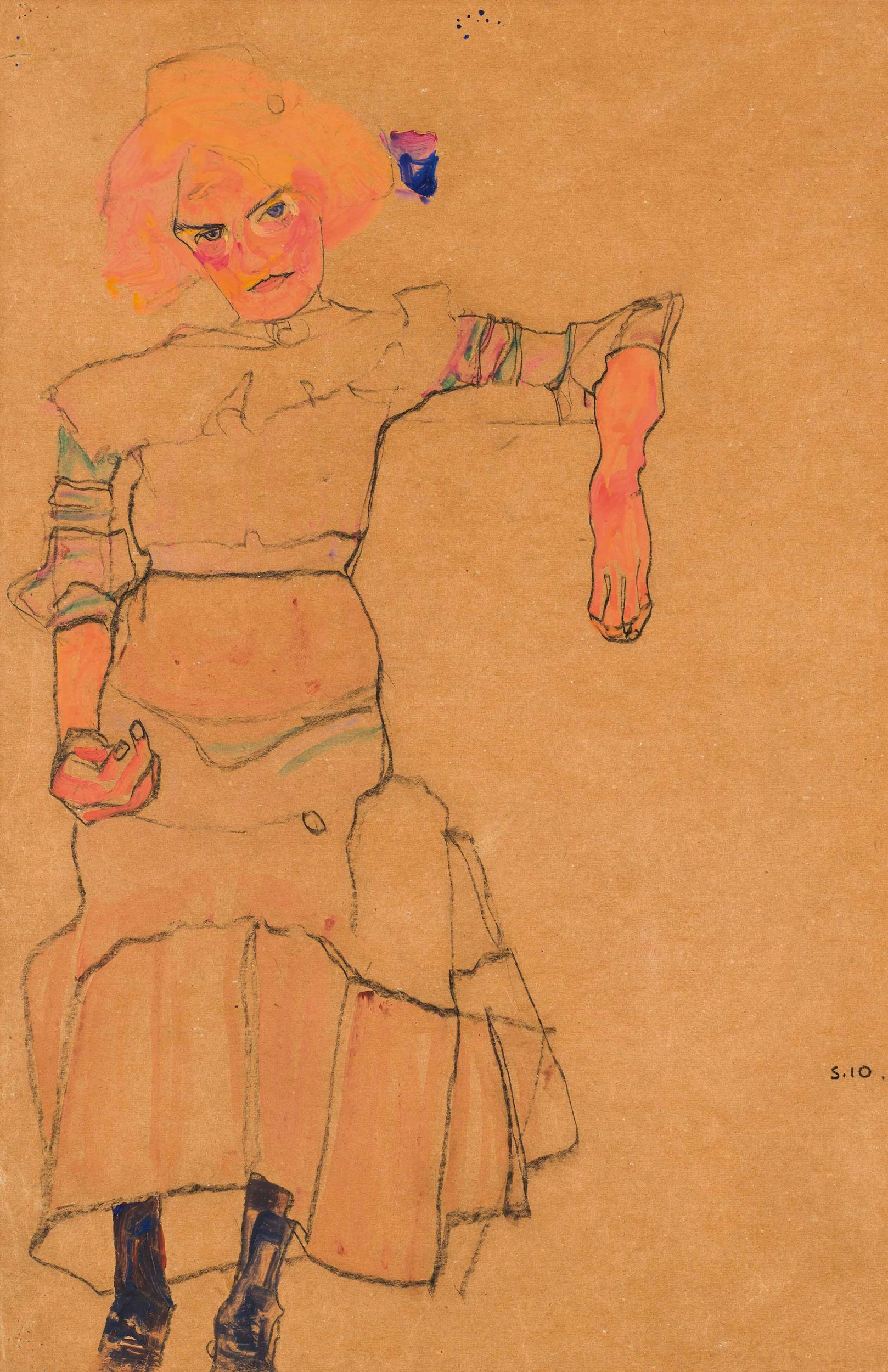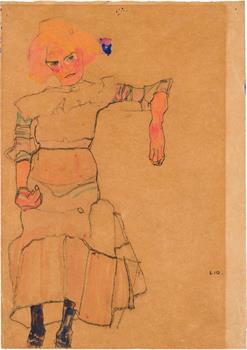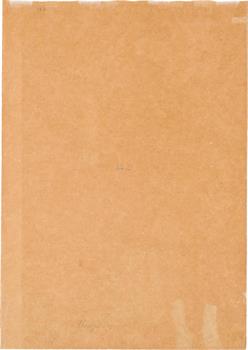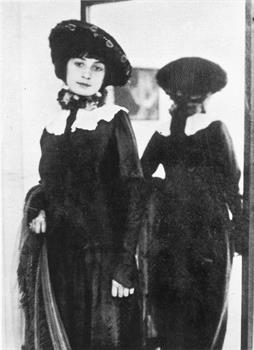0010
Egon Schiele
(Tulln 1890 - 1918 Wien)
„Gertrude Schiele Seated“
1910
watercolour and black crayon on paper; framed
45 x 31.8 cm
monogrammed and dated on the lower right: S. 10.
Provenance
Karl Mayländer, Vienna;
Austrian private property
Literature
Jane Kallir, Egon Schiele. The Complete Works, New York 1998, no. D. 474, b/w-ill. p. 402
This artwork is being auctioned on behalf of the current owners (Austrian private property) and the legal successors of Karl Mayländer based on an agreement in accordance with the Washington Principles.
Estimate: € 600.000 - 1.000.000
Result: € 763.000 (incl. fees)
Auction is closed.
The Auction House reserves the right to request a deposit, bank guarantee or comparable other security in the amount of 10% of the upper estimate. Please also note that purchase orders and accreditation requests must be received by the auction house up to 24 hours before the auction in order to guarantee complete processing.
The real Expressionist phase of Egon Schiele's work began in 1910. Thanks to his participation in the 1909 art exhibition, arranged by Gustav Klimt, the Viennese art scene had already become aware of the nineteen-year-old artist and his first patrons were Heinrich Benesch and Arthur Roessler. The Viennese entrepreneur Karl Mayländer, from whose collection this watercolour comes, was also one of the early collectors.
It depicts one of Egon Schiele’s favourite models in his early years – his sister Gertrude, four years his junior. He had a particularly close relationship with Gerti, as he affectionately called her. In 1914, she married her brother’s friend, the painter Anton Peschka.
In 1910, besides the often-anonymous nudes and self-portraits, he painted numerous portraits. In contrast to the extremely aesthetic depictions of people by Gustav Klimt, Egon Schiele “weaves a wide range of contents into a human image that departs from potentials for recognition and from flattery. Thus, at the age of twenty, the artist had already reached the peak in his creative work, making Schiele a giant of the portrait genre” (Christian Bauer (ed.), Egon Schiele, Fast ein ganzes Leben (“Almost an entire life”), Munich 2015, p. 64).
In this portrait, in contrast to earlier works, which still display the “bashful shyness of a young girl” (Agnes Husslein-Arco, Jane Kallir (eds.), Egon Schiele. Selbstporträts und Porträts, exhibition catalogue, Belvedere, Vienna 2011, p. 47), Gertrude is portrayed as an energetic, almost angry woman who gazes at the viewer in a challenging way. This impression is created not only by her expressive eyes with their raised brows and the straight line of her mouth, but also her forearms and hands, which are likewise highlighted in an expressive incarnadine hue. The left arm rests confidently on a balustrade or the back of a chair, while the right hand is clenched in a fist. It is typical of Egon Schiele that, in addition to the face with its different expressions, he often includes the hands as a characteristic feature of a person in his portraits. The artist leaves us uncertain as to where exactly Gerti is sitting. Strictly speaking, his sister is sitting in the empty space of the paper left blank in the background. The lack of spatial localisation and the way the sitter is embedded in the surrounding space is unsettling. The result is a kind of negative space, a stylistic feature borrowed from Art Nouveau. These empty spaces would define Egon Schiele's style until the end of his life – “only here, he (already) ventured to take the step from a decorative to an expressive stylisation” (Jane Kallir in: Husslein, p. 85).
(Sophie Cieslar)





